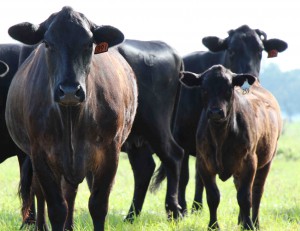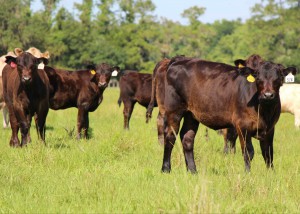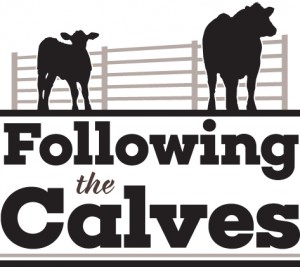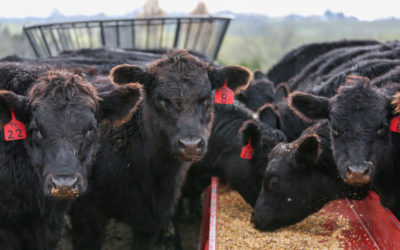
Following the Calves: A Florida weaning
It’s with those same traits that he runs Usher Farm, a family business in Chiefland, Fla., alongside wife Lynetta, only son Korey, and a handful of committed employees.
“In the cow business, you’re either in the commodity business or the premium business,” Ken says, “and we chose a long time ago that we were going to pursue the premium end.”
Decades have passed since he left a family automobile business to join his father-in-law on the land, so the challenge now is what to do given the environment and resources at hand. “You can’t ever be perfect, but what can we produce? How good can we get?”

Usher calves are bred and born with focus. Emphasizing Angus genetics as the key stepping stone to carcass merit, cattle are selected not only by soundness and phenotype, but for the ability to produce carcasses that earn premiums such as those awarded for Certified Angus Beef® brand qualification.
To get a base cow, they’ll take a quarter Brahman and breed her to an Angus bull, take that calf and breed to a Charolais. In a typical year Angus dominates the gene pool, but Charolais had its crest this year for the sake of the terminal herd.
“We want a 980-lb. carcass that’s Prime,” Ken says of his end-product goals. Those differ only slightly among the three primary herds on the ranch, as calves from each go on to the feedlot and packinghouse rails.

So as much as Ken can make you feel welcome to follow along, it’s those cattle that’ll keep you around.


“They’re coming off early but they are knocking their mommas back,” Ken says. “After a few days of whining, she’ll be proud of us.”

Don’t miss out on what happens next — be sure to Follow the Calves.
Laura
P.S. To read more of our Following the Calves series, follow these links:
You may also like
New calf marketing routes
For the 70% or more of beef calves born last spring, more than the usual share veered from traditional roads to the feedyard come fall. Backgrounding those calves opened gates to several new revenue paths, though not without risk.
Progress from small steps
Every day is a chance to learn and get better. Thousands of others like my new friends in Alabama are taking steps to meet the shifts in consumer demand, and to know more. Small steps in the right direction can start now. Even if it’s just recording a snapshot of where you are today, a benchmark for tomorrow.
Not perfect, but working to get better
The CAB Cattleman Connection team heard its name called more than once in the virtual ceremonies, and each time came a sense of personal accomplishment, but even better: confirmation that we’re getting better at our craft. I hope that means we’re doing a better job for you.





